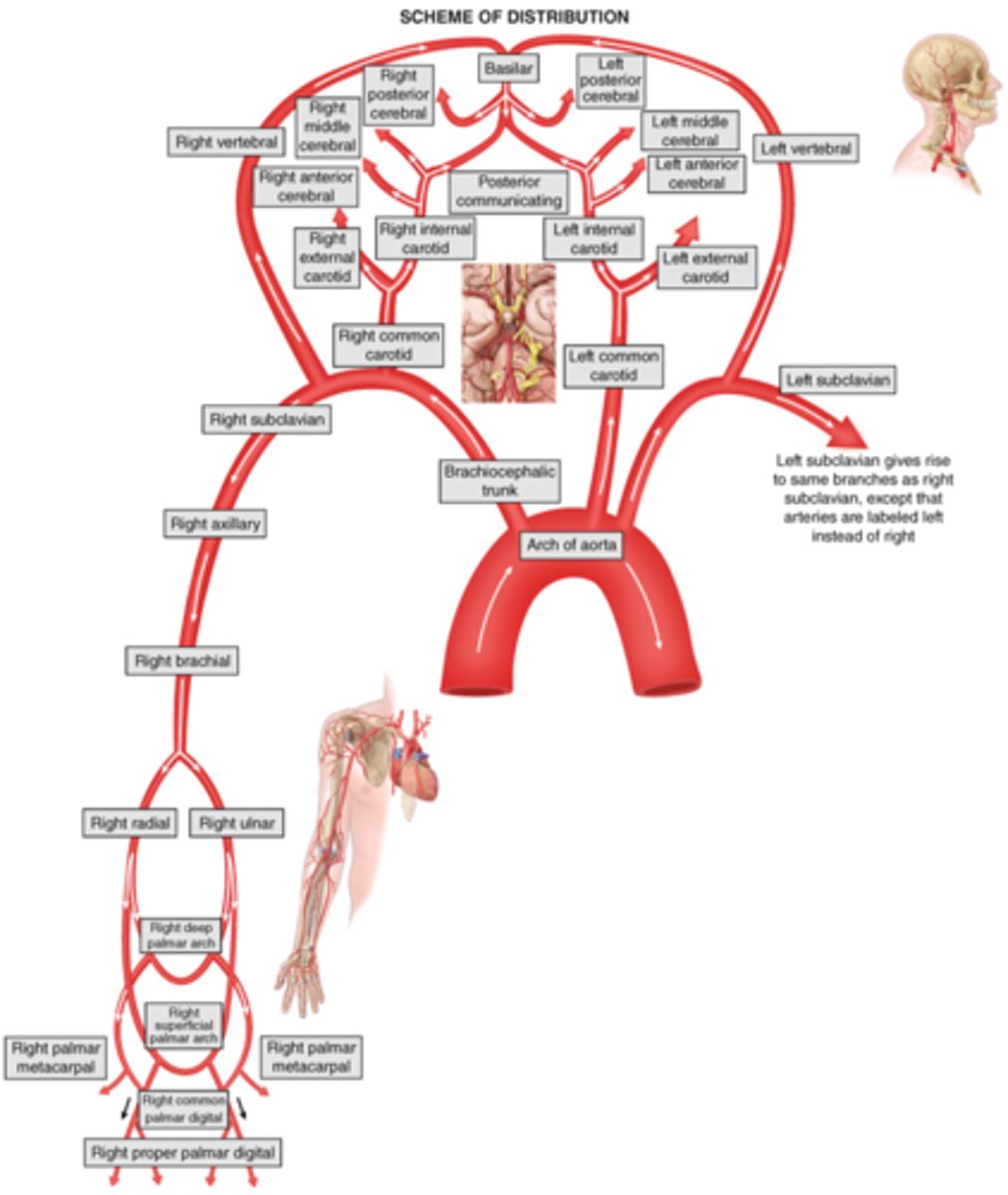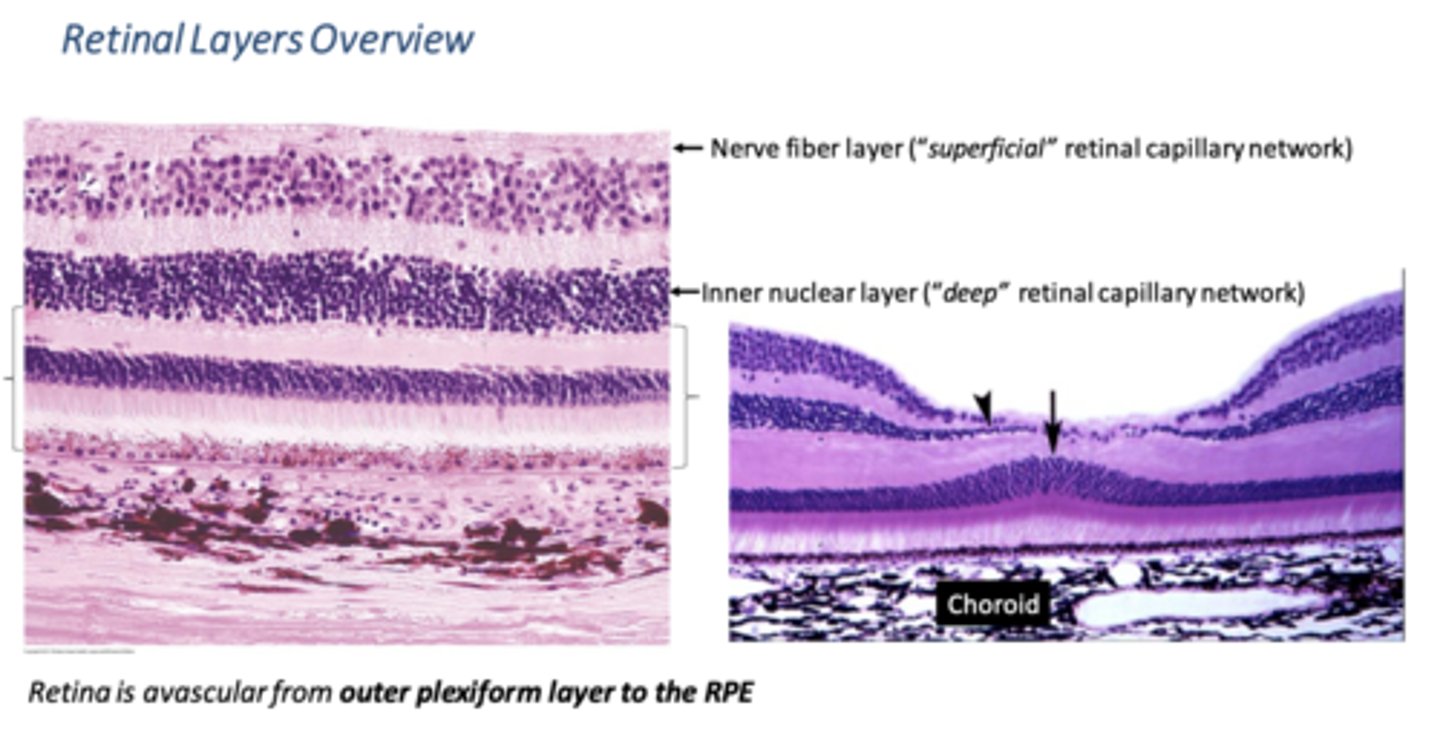Ocular circulation
1/10
There's no tags or description
Looks like no tags are added yet.
Name | Mastery | Learn | Test | Matching | Spaced |
|---|
No study sessions yet.
11 Terms
•2 separate system of blood vessels to eye:
CRA - inner 2/3 (NFL --> OPL)
chorocapillaris - outer 1/3 (Photoreceptors --> ONL)
how do retinal blood vessels get to the eye
center of physiological cup
how do veins get to the eye
travel with arteries as they enter globe through ONH
arterioles vs venulues
arterioles:
•Narrower and lighter; brighter and straighter
no pulse
•There is a linear reflex along vessel center (middle 1/3) of the vessel)
venulues:
•Wider, darker and duller
•More curved or tortuous
•Have little if any reflex
•Assess the A/V ratio beyond the ___ Bifurcation
2nd
blood flow heart to brain
•Aortic arch:
-Brachiocephalic artery --> Right common carotid --> internal and external cc
-Left common carotid artery --> internal and external cc
-Left subclavian artery

CRA capillary networks
˃inner capillary plexus (ganglion cell layer)
˃outer capillary plexus (inner nuclear layer)

2 blood retinal barriers
1. outer = tight junction of RPE apical side
2. inner = nonleaky tight junctions of endothelial cells of CRA (retinal vessels)
what ocular tissue has the highest blood flow
choroid
perfusion pressure =
•P = P (arterioles) - P (venules)
-P(arterioles) = 65-70 mm Hg
-P(venules) = intraocular pressure
BV diameter is regulated by what in choroid and retina?
-Autonomic Nervous System
•CHOROID, CILIARY BODY, IRIS
•NOT IN RETINA
-Autoregulation
•RETINA, CILIARY BODY, IRIS
•NOT CHOROID